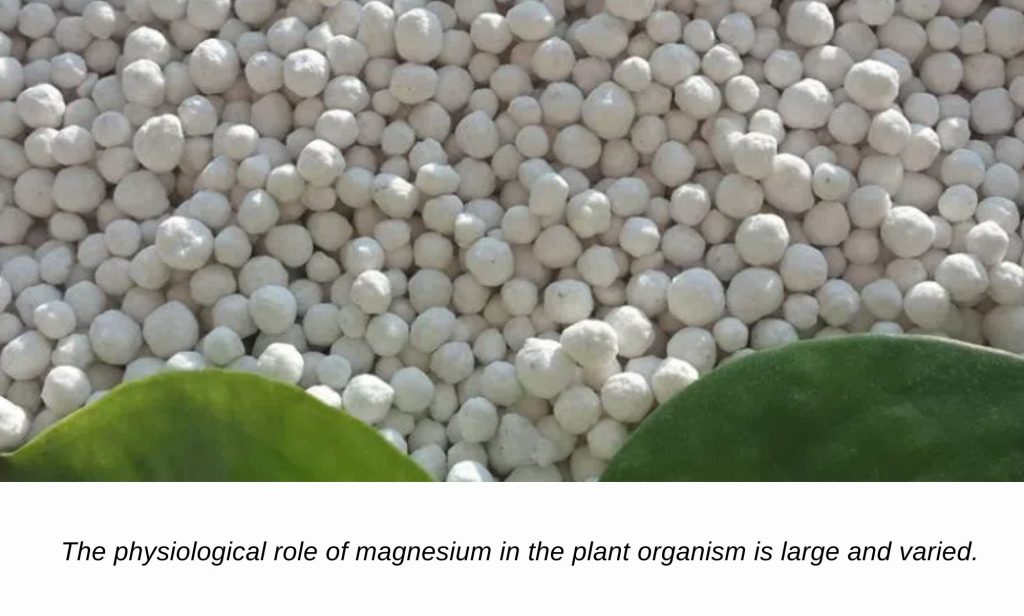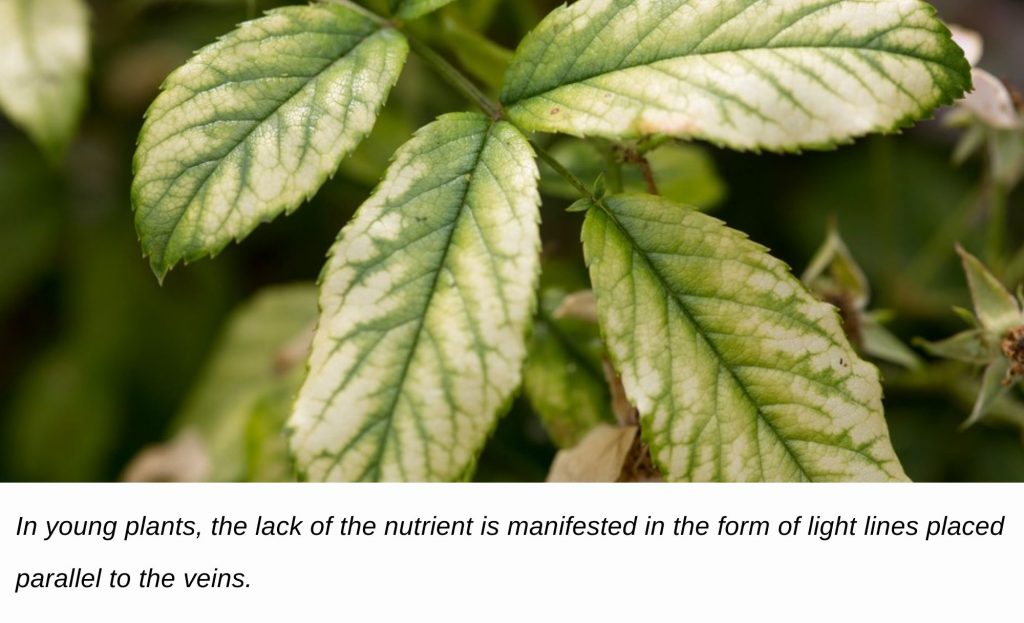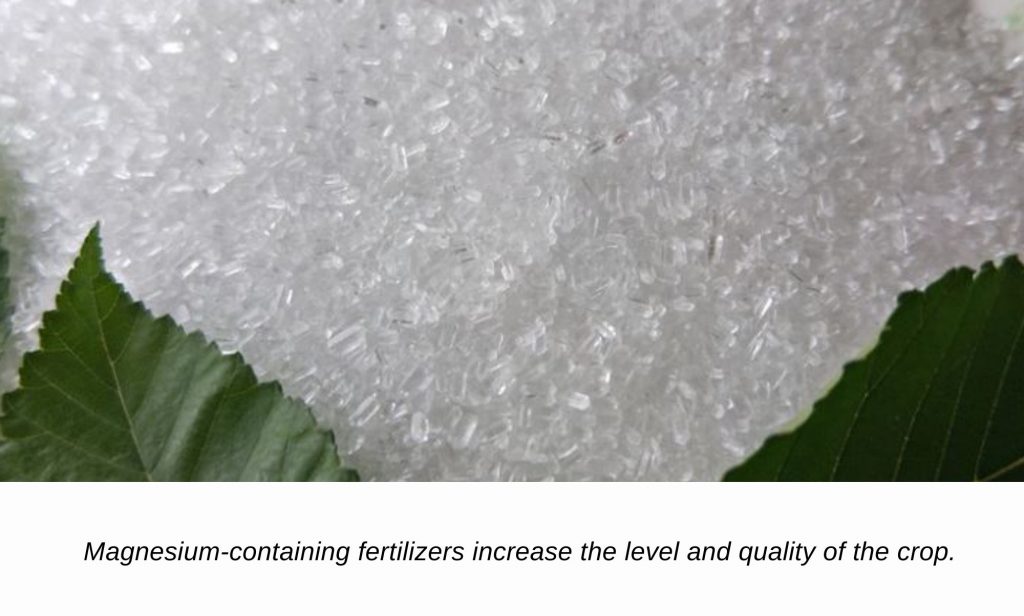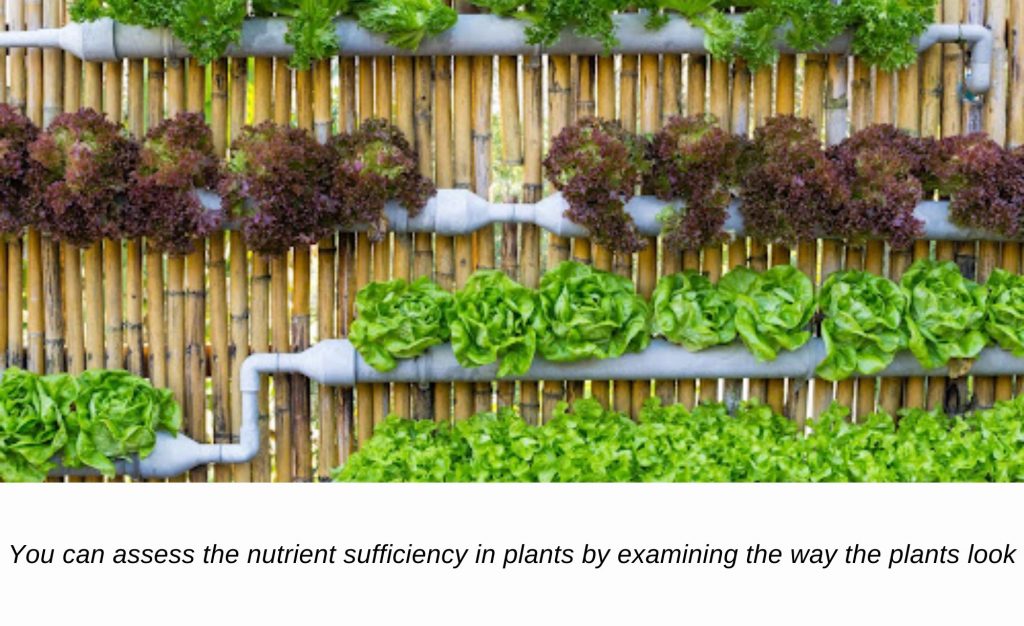After nitrogen, phosphorus, and potassium, magnesium is one of the most important plant nutrients. It literally plays a central role because it’s essential for the formation of chlorophyll. Without this nutrient, photosynthesis in plants is impossible.
This is one of the most important nutrients for plants. Therefore, appropriate nutrition is especially important during their growth period.
Magnesium in nature
This element is ubiquitous in nature. Magnesium carbonate occurs in large quantities, forming magnesite MgCO3 and dolomite MgCO3 – CaCO3. Magnesium chloride and sulfate are part of the potassium minerals Kainite KCl – MgSO4 – 3H2O and carnallite KCl – MgCl2 – 6H2O.
The Mg2+ ion is found in seawater, which gives it a bitter taste.

Earth’s crust contains about 2.1% of the element. In massive rock formations, some of the magnesium is represented by aluminates. Minor amounts are present in fluoride and chloride compounds, as complex borates and phosphates.
In soil, the element is present in the form of sulfates, carbonates, and chlorides. However, magnesium silicates predominate.
A small amount of the element is found in the organic matter of the soil.
The amount of the element absorbed by soils varies from tenths of a percent to 3%, sometimes more. Even in relatively magnesium-rich soils, its content is uneven and in some areas is reduced to 0.25%. The areas of high moisture are characterized by the leaching of part of the magnesium in deeper soil horizons. Insufficient moisture contributes to its accumulation in the upper layers due to ascending moisture flows.
The magnesium content in various soils
1. Sandy and sandy loam soils are generally poor in this element. Their critical magnesium content is 0.0002 oz. per 3.5 oz. of soil.
2. Acidic and highly acidic soils are characterized by magnesium leaching, which requires annual application of soluble fertilizers.
3. Soils with a reaction close to neutral are characterized by weak magnesium leaching. Its content in such soils is higher. The nutrient is applied only under the crops that require it.
4. Sod and podzolic soils of light mechanical composition have insufficient magnesium content.
5. Red soils and podzolic soils of humid subtropics often suffer from a lack of the nutrient. Most such soils contain less than 0.004 oz. of readily mobile magnesium per 3.5 oz. of soil. This is a critical value for growing cultivated plants.
Importance of magnesium for plants
This essential nutrient is a direct participant in photosynthesis and a component of the chlorophyll molecule. It actively promotes the movement of phosphorus in plants, strongly influences the activity of enzymes, and significantly accelerates the formation of carbohydrates. It is part of the basis of ribosomes, acting as a building material.

The peculiarity of magnesium is that the consumption of the element directly depends on its competition with secondary cations, and above all the presence of Ca2+. As a consequence, nutrient deficiency, in cases where the ratio of calcium to magnesium is very high, takes place when the supply of the nutrient is fairly sufficient. Magnesium deficiency is also observed in soils with a pH below 4.5. An optimal level of assimilation of the element by crops is in the range of 5 to 5.7 pH.
The physiological role of magnesium in the plant organism is large and varied. The nutrient has the following functions in plant culture:
- it’s a part of chlorophyll;
- It’s contained in nuclides, phytin, pectin substances in the form of phosphates;
- can be found in cell sap in its inorganic form;
- promotes cell metabolism;
- activates enzyme systems;
- indispensable in the process of respiration;
- activates the enzyme system of kinases responsible for the separation of phosphoric acid from adenosine triphosphate and transfers it to molecules of sugars and their derivatives, as well as to amino acids to form new organic substances;
- it’s a component of coenzymes that activate the activity of enzymes of the group of transferases;
- activates enzymes of the citric cycle;
- plays a significant role in the accumulation of ascorbic acid in plants (magnesium ions react with unstable dienol groups of ascorbic acid, weakening or delaying its oxidation; the strongest stabilizing effect of the nutrient is observed in an acidic environment (sulfuric acid is an exception);
- has a significant influence on redox processes in plants;
- plays an important role in protein synthesis;
- enhances the mobility of phosphates in the soil and their entry into plant tissues;
- promotes the incorporation of phosphate into organic compounds, which increases plant utilization of phosphorus from fertilizers and soil;
- promotes reduction processes and has a positive effect on the biosynthesis of reduced organic compounds (rubber, essential oils);
- significantly increases the formation of carbohydrates in plants;
- promotes stabilization of colloidal systems;
- increases cell turgor;
- promotes the release of water bound in the soil.
Magnesium deficiency in plants
Shortage of the nutrient leads to protein metabolism disruption. The enzyme synthesis grows weak and slows down. Synthetic and assimilative activities are limited.
For proper plant growth and development, it’s important to ensure a timely supply of the element at the earliest stages of growth. The problem of deficiency is particularly acute when ammonium nitrate is used as the main source of nitrogen.
The main, visible signs of magnesium starvation are:
- First of all, the deficiency appears on older leaves. They first develop grayish-colored specks placed in the center, then they increase in size.
- Additional signs include brittleness and curling of the leaf plates.
- In young plants, the lack of the nutrient is manifested in the form of light lines placed parallel to the veins.
- At a later stage, there are problems with flowering and pollination.
In the case of the nutrient excess, the plant leaves become emerald in color. The leaf plates start curling at the edges. In some cases, leaves may decrease in size.
Methods to eliminate magnesium deficiency
- Soil liming by application of magnesium-containing lime fertilizers. This allows both supplying the entire crop rotation with magnesium and calcium and eliminating excessive soil acidity.
- Application of mineral fertilizers, taking into account the biological need of the plants in nutrients.
- The application of organic fertilizers that contain about 0.01-0.09% magnesium.
Magnesium fertilizers
The main source for the production of magnesium fertilizers is natural compounds and minerals of this element. Magnesium is part of more than 200 minerals, many of which are used as a source of the nutrient directly or processed into compound fertilizers: sulfates, chlorides, carbonates, silicates, hydroxides, and aluminosilicates.
Importance of magnesium fertilizers
Magnesium-containing fertilizers increase the level and quality of the crop. The content of starch, sugar, protein, vitamin C increases in plant products. The quality of seed material improves as well: germination and germination energy increase, resistance to unfavorable environmental conditions and fungal diseases strengthens.

Classification of magnesium fertilizers
Lime-magnesium and potassium-magnesium fertilizers account for the largest share in the range of magnesium fertilizers. Based on water solubility, they are classified into the following categories:
- Water-insoluble — milled natural minerals and rocks such as dunite, serpentinite, vermiculite, dolomite, magnesite, brucite, and dolomitized limestone. When interacting with acidic soils, magnesium available to plants is released into the soil solution;
- Water-soluble — raw salts and products of their processing: epsomite, kainite, carnallite;
- Soluble in citric acid and available to plants — magnesium fused phosphate.
Based on composition, magnesium fertilizers are categorized as:
- Simple — magnesite, dunite;
- Compounds containing multiple nutrients:
- Nitrogen-magnesium — ammoshenite, dolomite-ammonium nitrate;
- Phosphorus-magnesium — magnesium fused phosphate;
- Potassium-magnesium — potassium-magnesium concentrate, potassium magnesia, polyhalite, kainite, carnallite;
- Boron-magnesium — magnesium borate;
- Lime-magnesium — dolomite, dolomitized limestone and products of their processing;
- Containing nitrogen, phosphorus, and magnesium — magnesium-ammonium phosphate.
Magnesium-containing lime fertilizers
These fertilizers simultaneously enrich the soil with mobile magnesium compounds and neutralize excessive acidity. They are the most effective and cheapest way to supply sandy and sandy loam soils with the nutrient.
Dolomite flour (CaCO3⋅MgCO3)
Contains about 20% MgO and 30% CaO; carbonic calcium and magnesium account for at least 85%. It’s used to lime acidic soils at a dose of 3-4 t/ha. In this case, the soil is enriched with magnesium in amounts sufficient to feed plants for one or two rotations. The most effective on the light soils.
The Dolomites are insoluble in water, so their effect depends on the fineness of granule size. Dolomite flour with a granule size of less than 0.03 inches provides the largest increase in crop yields.
Semi-sintered dolomite (CaCO3⋅MgCO3)
The product of dolomite firing. Contains about 27% MgO, 2% CaO, 57% CaCO3. Magnesium is well available to plants. It’s used for soil liming.
Magnesium carbonate, or magnesite (MgCO3)
Contains 45% MgO — the most concentrated magnesium fertilizer. It’s a natural mineral and sintered magnesite (up to 89% MgO) obtained in the production of refractories. It has an alkaline reaction with a high neutralizing power superior to that of lime. However, high doses of this fertilizer cause calcium and boron deficiency in plants. This is why they usually combine it with boron for crops that require it, such as sunflowers, beets, and clover. And in order to neutralize excessive acidity, it’s combined with calcium carbonate.
Sintered magnesia should be packed in waterproof bags and stored in a dry room. Common magnesium-containing fertilizers
Dunite meal and serpentinite
Wastes of the mining and asbestos industry. According to their chemical composition, they are magnesium silicates in a poorly soluble form, so they are used in advance and in large doses. These magnesium-containing fertilizers are used as raw materials for the production of complex magnesium fertilizers, as well as a local fertilizer. They decompose slowly under the influence of soil acids. The finely ground dunite contains 41-47% MgO. Serpentinite consists of magnesium metasilicate and contains 32-43% MgO.
Ammoshenite
Ammochenite ((NH4)2SO4⋅MgSO4⋅6H2O) is a double salt of ammonium sulfate and magnesium sulfate. It’s a crystalline mineral of light brown to gray color. Used as a nitrogen-magnesium fertilizer; contains at least 7% N and 10% MgO. It’s usually transported in multi-layer bags impregnated with bitumen.
Magnesium Sulfate
Magnesium sulfate (eleonite and kieserite) is a one-way magnesium fertilizer that contains at least 84% MgSO4⋅7H2O and no more than 6% NaCl (17.7% MgO). It’s well soluble in water. Used in intensive agriculture in case of magnesium deficiency in weakly acidic and neutral soils. In this case, the high yield constantly requires readily soluble sources of magnesium. It’s also used in intensive meadows, greenhouses, and vegetable gardens. This fertilizer is used to eliminate acute nutrient deficiency by foliar feeding. When entering the soil, most of the magnesium is converted into a metabolized state.
Potassium magnesia (K2SO4⋅MgSO4⋅6H2O)
A semi-product in the production of potassium sulfate from kainite. Contains mainly the mineral schönite. The fertilizer shows high efficiency on sandy sod-podzolic soils due to good solubility and potassium-magnesium ratio.
Potassium-magnesium concentrate
Obtained from kainite-langbeinite rock by flotation. This fertilizer compound mainly contains the mineral langbeinite (K2SO4⋅2MgSO4), with small amounts of polyhalite, halite, gypsum, etc. On average, it contains 30-38% K2SO4, 39-40% MgSO4, 4-5% KCl, and 8-10% NaCl.
This compound is produced in two grades: grade 1 contains at least 19% K2O and 9% MgO, grade 2 contains at least 17.5% K2O and 8% MgO. The content of chlorine is not regulated, but the 1st grade type contains no more than 8% of it.
Polyhalite salts
This compound (K2SO4⋅MgSO4⋅CaSO4⋅6H2O) contains 10-11% K2O, 8-12% MgO and is poorly soluble in water, but potassium and magnesium are available to plants. Polyhalite salts showed effectiveness on different crops, especially in meadows and pastures.
Kainite (KCl⋅MgSO4⋅3H2O)
A compound with an admixture of sodium chloride up to 45-47% of the total mass. It contains 10-12% K2O, 22-25% Na2O; 6-7% MgO, 15-17% S and 32-35% Cl. It’s a low-percentage fertilizer, so it’s mainly used in meadows and pastures, where it has advantages over potassium chloride because of the presence of magnesium.
Phosphorus and magnesium fertilizers
Thermophosphates and basic slag are phosphorus-magnesium fertilizers, a byproduct of metallurgy. The nutrients are contained in citric-soluble forms and are available to plants.

Fused magnesium phosphate (FMP)
Contains phosphorus and magnesium available to plants (Ca3(РO4)2 + MgSO4⋅SiO3). It’s obtained by fusion of natural phosphates and magnesium raw materials (dunite, kieserite, serpentinite, olivinite) at 2372-2552°F followed by rapid cooling in water. It comes in the form of vitreous transparent granules of different shapes and sizes. The color of the granules varies from bright green to black, depending on the initial raw material.
The FMP compound contains 19-21% available citric-soluble P2O5 and 8-14% MgO. Phosphorus in PMF is in the form of tricalcium phosphate modification soluble in 2% citric acid. The production of the compound doesn’t require the use of sulfuric acid or large amounts of energy and water, and allows the use of low percent natural phosphates without prior enrichment. The fertilizer is characterized by good physical properties, doesn’t flake, no free acidity.
Finely milled FMP is highly effective for main application on all types of soils. On acidic sandy and sandy loam soils, PMF to some extent neutralizes soil acidity. In humid tropical climates, the fertilizer is more promising than water-soluble forms, as it does not cake and loses fewer nutrients from leaching with precipitation.
Thermophosphates are effective when they are finely milled, but in this state, they are very dusty. One way to solve this problem is to pellet finely milled FMP with potassium chloride.
Magnesium ammonium phosphate (MAP) (MgNH4PO4⋅nH2O)
A concentrated fertilizer containing phosphorus, nitrogen, and magnesium. It’s produced from phosphoric acid, ammonia, and magnesium hydroxide or magnesium chloride, sulfate, or carbonate. It can be in the form of a crystalline hydrate, containing one (MgNH4PO4⋅H2O) or six (MgNH4PO4⋅6H2O) water molecules. The latter is unstable during storage, releasing ammonia at 86-122°F. Monohydrate magnesium-ammonium phosphate is nonhygroscopic, stable at up to 446°F, and doesn’t release ammonia during storage. Because of the lesser amount of water, monohydrate salt contains 35% more nutrients than hexaqua salt. Nitrogen in MAP is poorly soluble in water, which reduces its leaching in light soils, and doesn’t increase the osmotic pressure of the soil solution. Monohydrate MAP contains 45.7% P2O5, 10.9% N and 25.9% MgO.
Phosphorus in MAP is in a citric-soluble form, so this fertilizer is applied as a powder. When applied at a dose of 99-132 lbs P2O5/ha, the amount of magnesium that can meet the needs of all crops on sandy and sandy loamy-sandy ashy soils is added with it. On these soils, MAP is used as the main pre-sowing fertilizer.
This fertilizing compound can also be used as a concentrated nitrogen-phosphorus fertilizer. In this capacity, it’s used in irrigated agriculture, where phosphorus and nitrogen are added in small doses before sowing and then in the form of top dressing.
Due to its good physical properties, MAP can be used to prepare concentrated fertilizer mixtures or compound fertilizers. It’s enriched with nitrogen and potassium to the usual ratios.
Organic fertilizers
Organic fertilizers are a source of replenishment of exchangeable forms of magnesium. The systematic application increases the accumulation of absorbed magnesium in the soil, especially on sod-podzolic sandy and sandy loam soils.
The application of manure reduces the effectiveness of mineral forms of magnesium fertilizers. On sandy loamy soils with magnesium deficiency, maximum yields can be obtained by the combined application of organic fertilizers and mineral forms of the nutrient.
Magnesium supply diagnostics
You can assess the nutrient sufficiency in plants by examining the way the plants look, which changes with the nutrient deficiency or excess due to disruption of biochemical processes. The main external sign of magnesium deficiency is spotted necrosis: leaves become mottled, areas between veins are pale, veins retain their color.
These manifestations are due to the fact that the tissues adjacent to the conductive system are richer in chlorophyll and have a more intense green coloration. Since magnesium moves from the lower leaves to the upper leaves, the signs of deficiency appear predominantly on the lower leaves. An excess of magnesium causes the leaves to become darker, abnormally curled and wrinkled.
For a more accurate and objective assessment of magnesium nutrition and optimization of fertilizer doses, soil and plant diagnostics methods are used.
The low nutrient content is often inherent in light soils of granulometric composition. The fertility of sandy soils in terms of magnesium reserves is determined by the degree of weathering of primary magnesium-bearing minerals – feldspars, biotite, serpentine, augite, etc.
The need for fertilizers is determined by the content of magnesium available to plants, which is determined by soil extraction and using potassium chloride solution (KCl).
The degree of magnesium supply in plants during the growing season can be determined by plant diagnostics based on the nutrient content in individual plant organs.
Methods and timeframes for fertilizer application
Soil liming with dolomites allows the plants to be fully supplied with magnesium.
Potassium magnesia, a concentrated compound and kanite-based potassium salt, applied in doses normal for potassium fertilizers, provide the plants with a sufficient amount of the nutrient. In the case of root crops, sodium-loving plants, they use kainite and kainite-based potassium salt. Crops in this case are provided with potassium, magnesium, sodium, and sulfur.
Soluble magnesium-containing fertilizers are applied in the spring during tillage. Slightly soluble magnesium-containing fertilizers are superior to highly soluble ones under conditions of excessive moisture, heavy precipitation, and irrigation. Magnesium ammonium phosphate is promising for hydroponics. Magnesium sulfate is used indoors.
If magnesium fertilizers weren’t applied in the spring before sowing and the nutrient deficiency is detected, additional feeding is required. For this purpose, they use water-soluble fertilizers. Half a dose of the basic feeding is given as a top-up. If it happens early and if the nutrient deficiency is severe, they use full dosage.
Conclusion
Intensive farming leads to increased crop productivity. At the same time, the content of available forms of magnesium in the soil decreases, which means that there is a need to use fertilizers.
The high efficiency of magnesium fertilizers is noted not only for crops with a high need for the nutrient (potatoes, vegetables) but also for grain, industrial crops, and tea.


